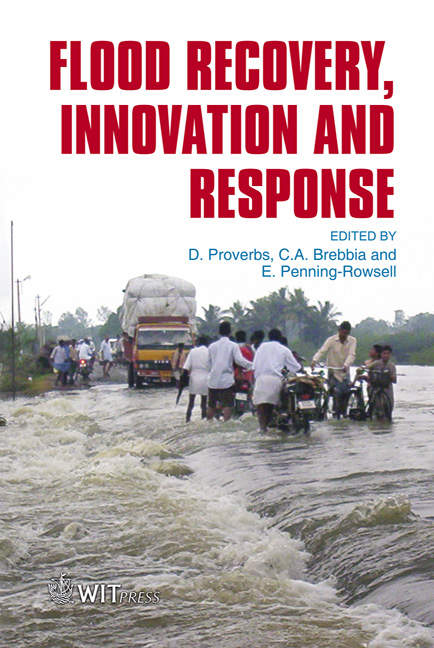Adapting To Climate Change: Using Urban Renewal In Managing Long-term Flood Risk
Price
Free (open access)
Transaction
Volume
118
Pages
13
Page Range
221 - 233
Published
2008
Size
438 kb
Paper DOI
10.2495/FRIAR080221
Copyright
WIT Press
Author(s)
C. Zevenbergen, W. Veerbeek, B. Gersonius, J. Thepen & S. van Herk
Abstract
Cities are dynamic systems. Understanding the role of time and the way it shapes the urban fabric and structure is crucial to assess urban flood vulnerability and to manage the capacity of cities to adapt to changes in demography as well as in climatic conditions. Consequently, cities have to learn from the past and anticipate the future in order to develop and implement effective flood management approaches. They have to eliminate unsatisfactory practices through investigation, experimentation and evaluation. Urban renewal of buildings and infrastructure is one of the means by which cities adapt to long term changes, to correct old errors and to increase flood resilience. According to the latest climate change scenarios flood frequency is going to increase significantly over the lifetime of existing buildings. Therefore, the inclusion of pro-active retrofitting in regular urban renewal schemes and decreasing lifetime cycles of new buildings are likely sound and effective strategies to increase the robustness of the urban fabric to climate change. Since current building practices are based upon the assumption that the built environment will not experience significant change, these approaches will have major ramifications for investment levels and building methods. In order to account for the relatively rapid rate of substitution of buildings and other built structures it is argued in this paper that the life cycle assessment and full cost accounting of the building stock should be included in the development of effective UFM strategies. Keywords: floods, climate change, adaptation, resilience, urbanisation, longterm planning, flood proofing, pro-active retrofitting.
Keywords
floods, climate change, adaptation, resilience, urbanisation, longterm planning, flood proofing, pro-active retrofitting.





